Private Lands Conservation
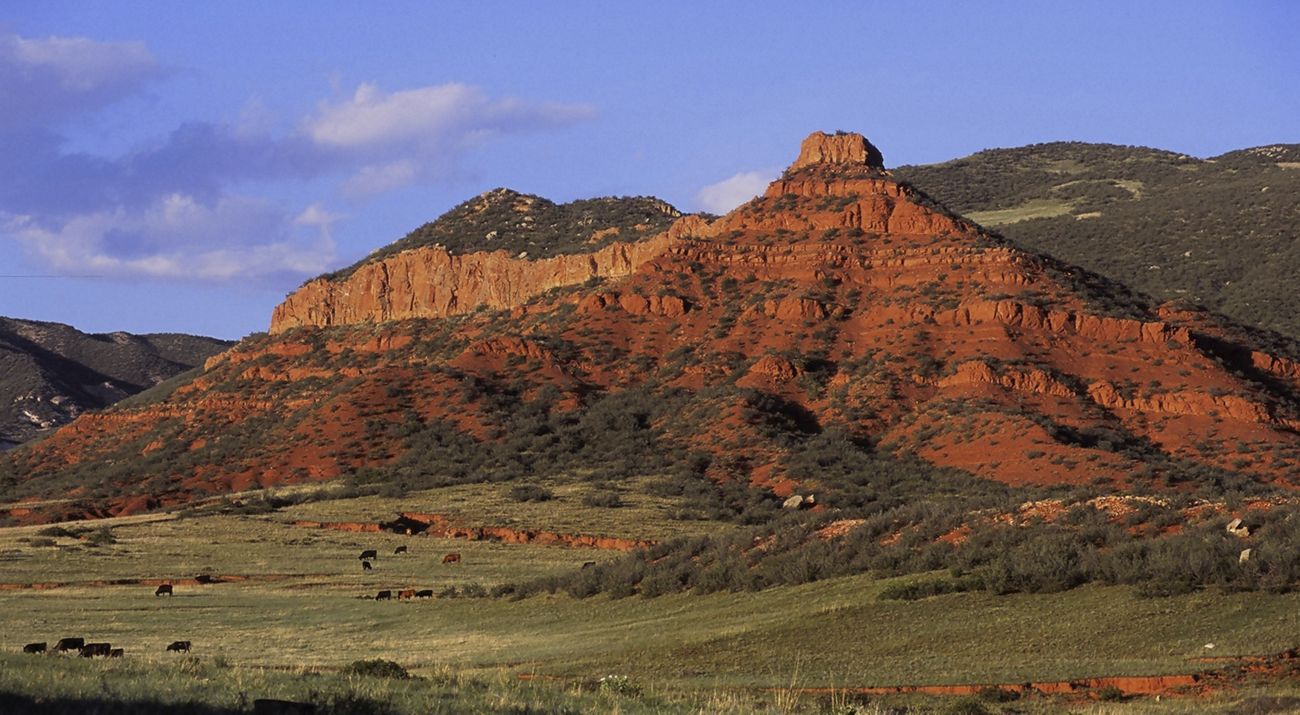
The Nature Conservancy works to establish local groups that can protect land.
Private lands conservation is an innovative tactic that leverages the increasing interest of the private sector to take part in conservation. TNC works with landowners, communities, cooperatives and businesses to establish local groups that can protect land. Some of the main tools used to achieve these goals include land trusts, conservation easements, private reserves and incentives.
- Switch to:
- Acquiring Land
- Land Easements
- Conservation Buyer
Private lands conservation is an innovative tactic that leverages the increasing interest of the private sector to take part in conservation. TNC works with landowners, communities, cooperatives and businesses to establish local groups that can protect land. Some of the main tools used to achieve these goals include land trusts, conservation easements, private reserves and incentives. In addition, a Private Lands Program was developed by The Nature Conservancy to use our experience in the United States in developing land conservation tools internationally.
Outside the U.S., TNC does not generally acquire land for its own protection but instead works with local communities and national governments to encourage the protection of ecologically-sensitive land.
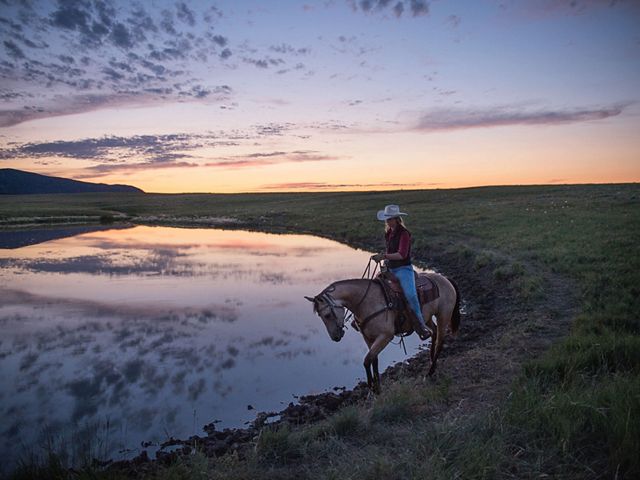
Conservation easements have protected millions of acres of wildlife habitat and open space.
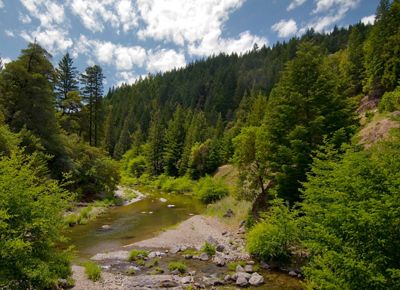
Conserving Land, Water & a Way of Life
Conservation easements are one of the most powerful, effective tools available for the permanent conservation of private lands in the United States.
The easement is either voluntarily donated or sold by the landowner and constitutes a legally binding agreement that limits certain types of uses or prevents development from taking place on the land in perpetuity while the land remains in private hands.
Conservation easements protect land for future generations while allowing owners to retain many private property rights and to live on and use their land, at the same time potentially providing them with tax benefits.
In a conservation easement, a landowner voluntarily agrees to sell or donate certain rights associated with his or her property—often the right to subdivide or develop—and a private organization or public agency agrees to hold the right to enforce the landowner's promise not to exercise those rights. In essence, the rights are forfeited and no longer exist.
An easement selectively targets only those rights necessary to protect specific conservation values, such as water quality or migration routes, and is individually tailored to meet a landowner's needs. Because the land remains in private ownership, with the remainder of the rights intact, an easement property continues to provide economic benefits for the area in the form of jobs, economic activity and property taxes.
A conservation easement is legally binding, whether the property is sold or passed on to heirs. Because use is permanently restricted, land subject to a conservation easement may be worth less on the open market than comparable unrestricted and developable parcels. Sometimes conservation easements will enable the landowner to qualify for tax benefits in compliance with Internal Revenue Service rules.
For more than four decades, The Nature Conservancy has been using conservation easements to protect landscapes from development — affording them better protection than could be accomplished through outright purchase.
How The Nature Conservancy uses Easements
In the Blackfoot Valley, TNC accepted Montana’s first conservation easement in the mid-1970s. Today, hundreds of thousands of acres across the state are covered by easements.
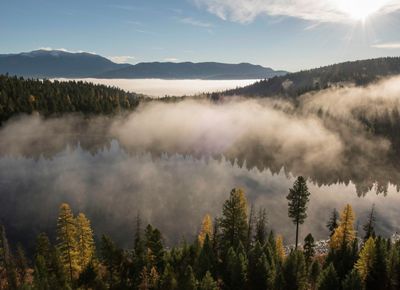
Resources
-
The Nature Conservancy actively supports rigorous oversight that would tighten rules governing syndicated easements.
The Nature Conservancy has long recognized the enormous conservation benefits that are realized when conservation easements are properly and effectively employed; we currently hold easements on 3.1 million acres of lands in 49 states.
These easements protect landscapes from development, safeguard land for sustainable use, protect sources of drinking water, keep generations of families connected to their land, protect endangered wildlife and build greater support for conservation. They are also an incredibly efficient tool for achieving public benefits at low cost, especially at a time when there is not enough public funding to protect land and water resources.
The Nature Conservancy actively supports rigorous oversight of the kind of syndicated easements mentioned in Peter Elkind’s story. TNC is on record and is currently working alongside partners such as The Land Trust Alliance to strongly support the IRS’s effort to control syndicated easements and to advocate for proposed changes to the tax code outlined in HR 4459 that would tighten the rules governing such easements. We urge you to voice your support of this bill by writing your congressional representative today.
Syndicated easements which rely on abusive appraisals jeopardize the many conservation-minded landowners who wish to voluntarily protect their land through conservation easements. Longstanding TNC policies and standard operating procedures have prevented TNC’s involvement in such abusive transactions. TNC firmly believes that syndicated easements—which promise investors aggressive tax deductions in exchange for modest cash investments—are wrong. Continued unchecked, such tax shelters will endanger the thousands of legitimate conservation easements and the well-intentioned people and conservation organizations behind them.
-
Tax incentives are available for private landowners interested in protecting the important conservation values of their lands through the donation of conservation easements. Learn more about this unique opportunity.
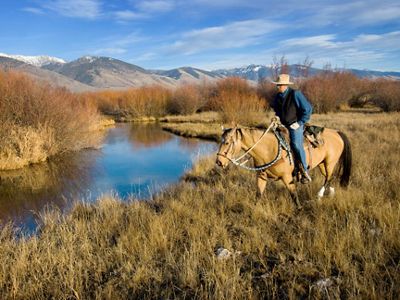
Conservation easements are designed for the land to protect natural features.
Today, The Nature Conservancy is pushing itself to do more, to increase its conservation tactics and effectiveness exponentially by focusing its attention on developing high-leverage tools and strategies that create conservation results on a scale large enough to make an enduring difference.
Property Listings
-
Size: 165 acres
Price: $379,500
The property will be encumbered by a conservation easement as described below.
Gulf Creek Canyon is an expansive hardwood forested ravine on the southeastern flank of Chandler Mountain near the town of Steele in northern St. Clair County. It exhibits some of the most spectacular scenery and rugged terrain to be found in northeastern Alabama including scenic viewpoints of the canyon and several waterfalls along Gulf Creek. This site contains a rustic but comfortable log home surrounded by magnificent views of the canyon.
Conservation Objectives
Chandler Mountain was identified as an ecoregional priority site in the Cumberlands and Southern Ridge & Valley Ecoregional Plan and represents an isolated plateau within the Cumberland and Southern Ridge and Valley ecoregion in northeast Alabama between the towns of Ashville, Oneonta and Attalla. The site hosts large expanses of relatively unfragmented mature hardwood and mixed pine-hardwood forests along the rim and slopes.
Biodiversity Highlights
Chandler Mountain hosts large blocks of relatively unfragmented mature hardwood and mixed pine hardwood forests along the rim and slopes. These forests harbor populations of many rare state plant species. The forests are likely to host large numbers of migratory songbirds which would breed in and pass through the area. Species likely to breed in the site include forest interior species such as ovenbird, scarlet tanager, yellow-billed cuckoo and others.
Easement & Restrictions
Development is limited to one acre site where cabin presently sits; no new roads and no harvesting of timber. Complete list of restrictions and details of the easement available by request
Contact
Beth M. Young
Phone: 205-533-1513
Email: beth@cypruspartners.com -
Size: 48,817 acres
Price: Please inquire
The property is or will be encumbered by a conservation easement as described below.
The JE Canyon Ranch is a 48,817-acre working cattle ranch located approximately 45 miles northeast of Trinidad in southeast Colorado’s majestic prairie canyonlands. Steeped in the history of the Old West and flush with some of the region's most diverse and abundant wildlife, the property currently serves as a pilot and test site for The Nature Conservancy's innovative conservation and property management strategies intended to maintain and enhance the ecological and economic value of this already remarkable property, as well as natural lands and local communities across the west. Positioned to become a leading example of world-class rangeland management, with resulting social, economic and environmental resilience, The Nature Conservancy seeks a buyer committed to conservation and continuing JE Canyon’s role as a pilot project in partnership with the Conservancy through at least April 2021.
Primary Conservation Objectives
The property is within the Prairie Canyonlands Conservation Area, which includes the largest and most intact area of native prairie in the Central Shortgrass Prairie Ecoregion. The JE Canyon Ranch is at the heart of a growing core area of protected lands, and The Nature Conservancy's proposed ongoing land management, sustainable grazing, and innovative educational and outreach activities on the property intend to influence broader conservation outcomes in the region and further enhance the value of this already remarkable property.
Biodviersity Highlights
More than 55 miles of sandstone canyons carve the ranch, including the 700-foot deep main canyon of the Purgatoire River. Nine miles of the river flow along the red rock cliffs on the property's west side, mirrored by six miles of Chacuaco Creek along the eastern boundary. The ranch's uplands include native shortgrass prairie habitat. Pinyon-juniper woodlands occupy canyon rims, and north-facing slopes shelter remnants of ancient stands of aspen and ponderosa pine. Numerous springs and pools provide oases for both aquatic and terrestrial species in this arid land. The ranch has varied and notable wildlife including elk, mule deer, pronghorn, black bear, mountain lion, turkey, beaver, and Colorado's largest and healthiest population of Rocky Mountain bighorn sheep. More than 850 flora and fauna species have been documented on the property by the Conservancy, the Colorado Natural Heritage Program and Denver Botanic Gardens. JE Canyon Ranch is itself home to more than 25% of the 70 reptile and amphibian species known in Colorado, including three species of conservation concern: Checkered whiptail lizard, Texas horned lizard, and Plains leopard frog.
Easement and Restrictions
The Nature Conservancy will convey a conservation easement to the Colorado Cattlemen's Agricultural Land Trust over the entire property prior to sale. Key terms of the easement will include the prohibition of conversion to crop agriculture, restricting the construction of buildings outside of approved building envelopes, and limiting subdivision. Cattle grazing, hunting and outfitting, and other recreational activities will be permitted in accordance with the terms of the conservation easement and management plan.
Contact
Galen Guerrero-Murphy
2424 Spruce Street, Boulder, CO 80302
(720) 974-7004
galen@tnc.org -
Size: 40 acres
Price: Negotiable
The property is or will be encumbered by a conservation easement as described below.
This ridge-top property, located in the Ouachita Mountains, is forested (shortleaf pine, oak, and hickory) with several north and south-facing glades. The ridges at this ecological site provide scenic vistas and harbor several ecoregional endemic flowers, including the Arkansas twistflower (Steptanthus maculatus). The Ouachita Mountain Ecoregion includes parts of Arkansas and Oklahoma, and comprises a landscape of approximately 11.48 million acres of rugged mountain ridges, broad valleys, and the headwaters of several large river systems, and is home to 48 endemic species.
Primary Conservation Objective
The goal at this site is to ensure the conservation of the full suite of viable plant communities through the reintroduction of fire, a key ecological factor for most terrestrial sites in the Ouachita Mountain Ecoregion.
Biodiversity Highlights
Several rare plants are found on the scenic ridgetop glades, such as the Arkansas twistflower (Steptanthus maculatus).
Easements & Restrictions
No subdivision, development, or clearcutting.
Contact
Derek Franklin
The Nature Conservancy
601 North University Avenue
Little Rock, AR 72205Phone: 501-614-5089
Email: dfranklin@tnc.org -
Size: 634 acres
H Bar L Ranch is a 634-acre property in Fremont County in Island Park, Idaho. This scenic property has expansive views of the Henrys Lake mountains and across Henrys Lake to Sawtelle Peak and the Eastern Centennials.
Price
The current estimate of the Fair Market Value (FMV) of the property as encumbered by a conservation easement is $2,850,000. An updated appraisal to confirm the FMV will be necessary.
Primary Conservation Objectives
TNC acquired H Bar L Ranch in order to protect the conservation, agricultural, scenic and open space values. TNC will sell the property subject to a conservation easement to ensure that those values remain permanently protected.
The conservation easement will restrict development and commercial uses, will protect the conservation values against impairment, and will be held by The Nature Conservancy, or another qualified holder, in perpetuity.
Biodiversity Highlights
Just 15 miles west of Yellowstone National Park, the Property contains habitat for long-billed curlew, sandhill crane, trumpeter swan, grizzly bear, pronghorn, moose and elk, as well as over one mile of Howard Creek, an important Yellowstone Cutthroat Trout spawning stream.
Easement and Restrictions
The property will be sold or traded to a buyer subject to a permanent conservation easement. Terms of the conservation easement will include:
- Development limited to one (1) residence within a specified building envelope
- No subdivision
- No tillage
- Protection of agricultural and conservation values against impairment
- Application of agricultural best management practices
- Limitations on non-agricultural commercial operations
- Wildlife-friendly fencing specifications
For more details and photos of the property, please review the Request For Proposals.
Contact
Mallory Spika
Operations Manager
The Nature Conservancy
P.O. Box 2770
Hailey, ID 83333
208/788-8988
mallory.spika@tnc.org
The information about the properties identified and listed herein do not constitute an offer to sell any particular property and cannot be accepted without additional written agreements between TNC and a prospective buyer. A prospective buyer will be expected to execute further documents, including but not limited to a purchase and sale agreement, in order to undertake and complete any transaction contemplated herein.
If the transaction involves a donation by the purchaser to TNC, a tax deduction may be available for the donation. It is the purchaser's obligation to establish the amount of the donation for federal tax purposes and prospective purchasers therefore must consult with their own advisers and rely upon their advice with respect to the availability of a tax deduction for the donation and the requirements for appraisals to substantiate the tax deduction.